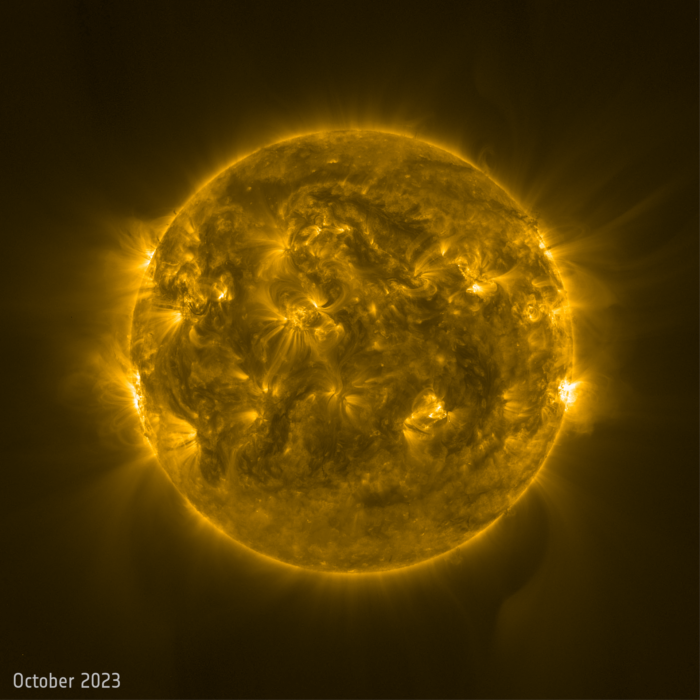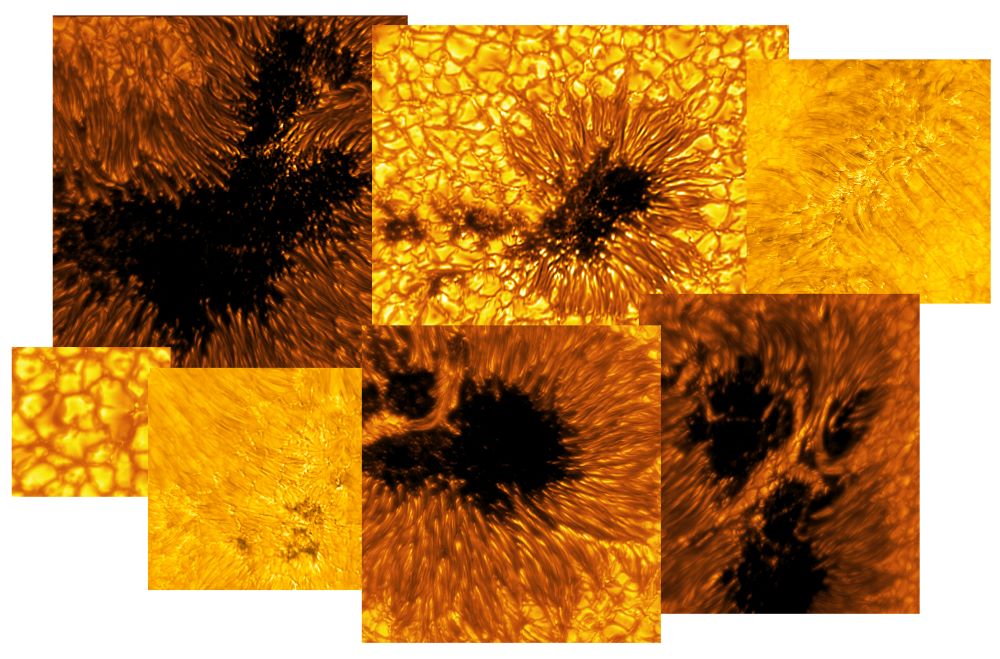The solar cycle has been reasonably well understood since 1843 when Samuel Schwabe spent 17 years observing the variation of sunspots. Since then, we have regularly observed the ebb and flow of the sunspots cycle every 11 years.
More recently ESA’s Solar Orbiter has taken regular images of the Sun to track the progress as we head towards the peak of the current solar cycle.
Two recently released images from February 2021 and October 2023 show how things are really picking up as we head toward solar maximum.

The Sun is a great big ball of plasma, electrically charged gas, which has the amazing property that it can move a magnetic field that may be embedded within. As the Sun rotates, the magnetic field gets dragged around with it but, because the Sun rotates faster at the equator than at the poles, the field lines get wound up tighter and tighter.
Under this immense stressing, the field lines occasionally break, snap or burst through the surface of the Sun and when they do, we see a sunspot. These dark patches on the visible surface of the Sun are regions where denser concentrations of solar material prohibit heat flow to the visible surface giving rise to slightly cooler, and therefore darker patches on the Sun.

The slow rotation of the Sun and the slow but continuous winding up of the field lines means that sun spots become more and more numerous as the field gets more distorted. Observed over a period of years the spots seem to slowly migrate from the polar regions to the equatorial regions as the solar cycle progresses.
To try and help understand this complex cycle and unlock other mysteries of the Sun, the European Space Agency launched its Solar Orbiter on 10 February 2020. Its mission to explore the Sun’s polar regions, understand what drives the 11 year solar cycle and what drives the heating of the corona, the outer layers of the Sun’s atmosphere.
Images from Solar Orbiter have been released that show closeups of the Sun’s visible surface, the photosphere as it nears peak of solar activity.
At the beginning of the cycle, at solar minimum in 2019, there was relatively little activity and only a few sunspots. Since then, things have been slowly increasing. The image from February 2021 showed a reasonably quiet Sun but an image taken in October last year shows that things are, dare I say, hotting up!
The maximum of this cycle is expected to occur in 2025 which supports theories that the period of maximum activity could arrive a year earlier.
Understanding the cycle is not just of whimsical scientific interest, it is vital to ensure we minimize damage to ground based and orbiting systems but crucially understand impact on life on Earth.
This article was originally published by Universe Today. Read the original article.





